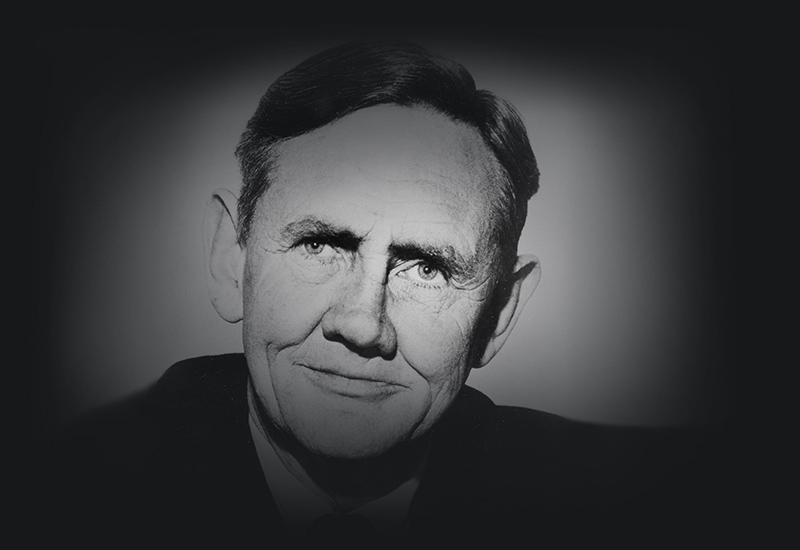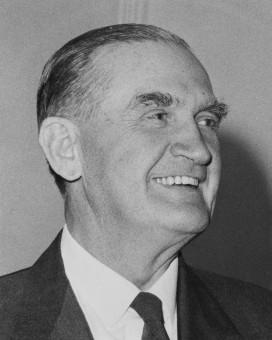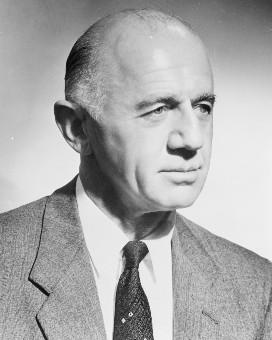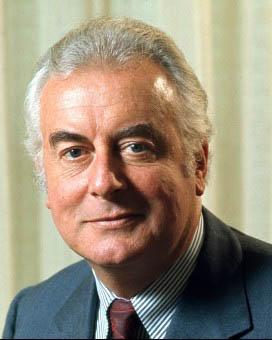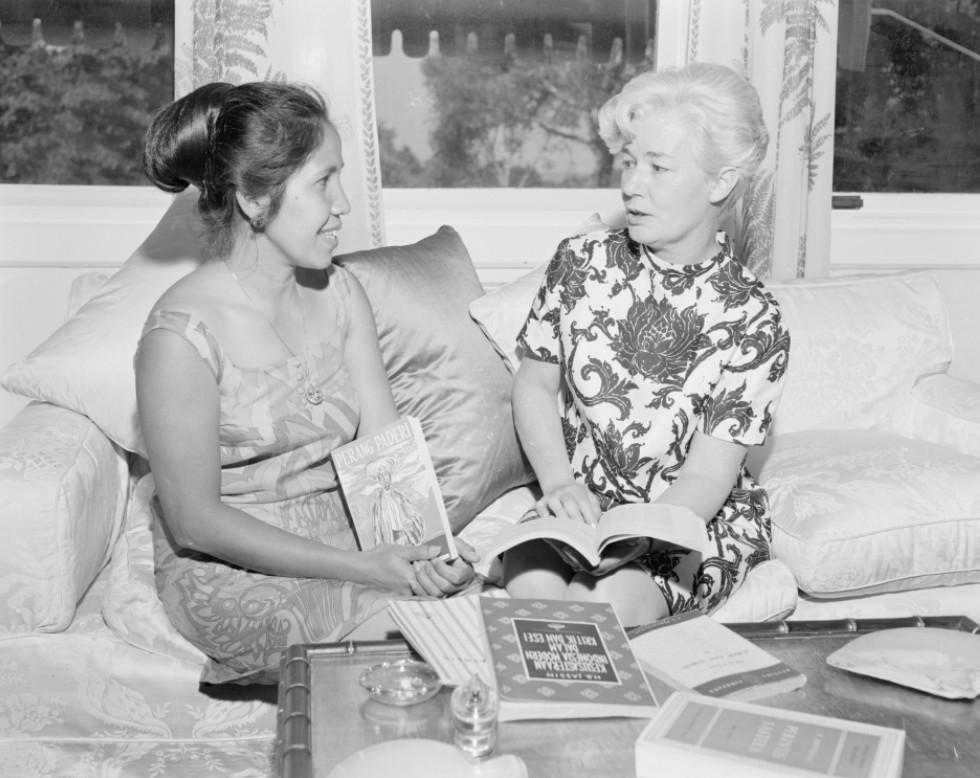
Bettina Gorton at work in the drawing room of The Lodge with her Indonesian language teacher Mrs Johns, in 1968. NAA: A1200, L68937
When Bettina Brown first met John Gorton in Spain in 1934, she was a young American language student at the Sorbonne in Paris. After marrying Gorton in 1935, she moved with him to his father's orchard in northern Victoria. During Gorton's war service, Mrs Gorton ran the orchard and raised their three children. This task fell to her a second time in 1950, when Gorton won a Senate seat and spent much of his time in Canberra. Being an orchardist in Victoria's Wimmera district was a long way from studying language in Paris, but her practical nature and commonsense approach enabled her to succeed. She later commented that the work of running a farm was '10% agriculture and 90% fixing things that are broken'.
In 1958, when Robert Menzies appointed Gorton Minister for the Navy, the Gortons moved to Canberra and bought a house in the suburb of Narrabundah. In 1960, Gorton was minister assisting Paul Hasluck as Minister for External Affairs, and the Gortons made an official visit to Sarawak. This was the first time Mrs Gorton had been in South East Asia and the trip was the beginning a lifelong passion.
The following year she enrolled for a second degree. She graduated with an Honours degree in Asian studies in 1967, when Gorton was Minister for Education and Science. The same year, Mrs Gorton began working as a part-time research assistant at the Australian National University (ANU), on the major project of compiling an English–Malay dictionary. At this time, she also became an Australian citizen, after the Department of Immigration allowed some foreign nationals to hold dual citizenship.
Soon after, she became Australia's most prominent woman, when John Gorton became Prime Minister in January 1968. Gorton had always sought her views on political issues, but Bettina Gorton had kept out of public life as much as possible. Her first official task was, however, the very personal one of helping Zara Holt through the sad task of removing the Holts' personal items and furniture from The Lodge. The Gortons moved into The Lodge late in January 1968.
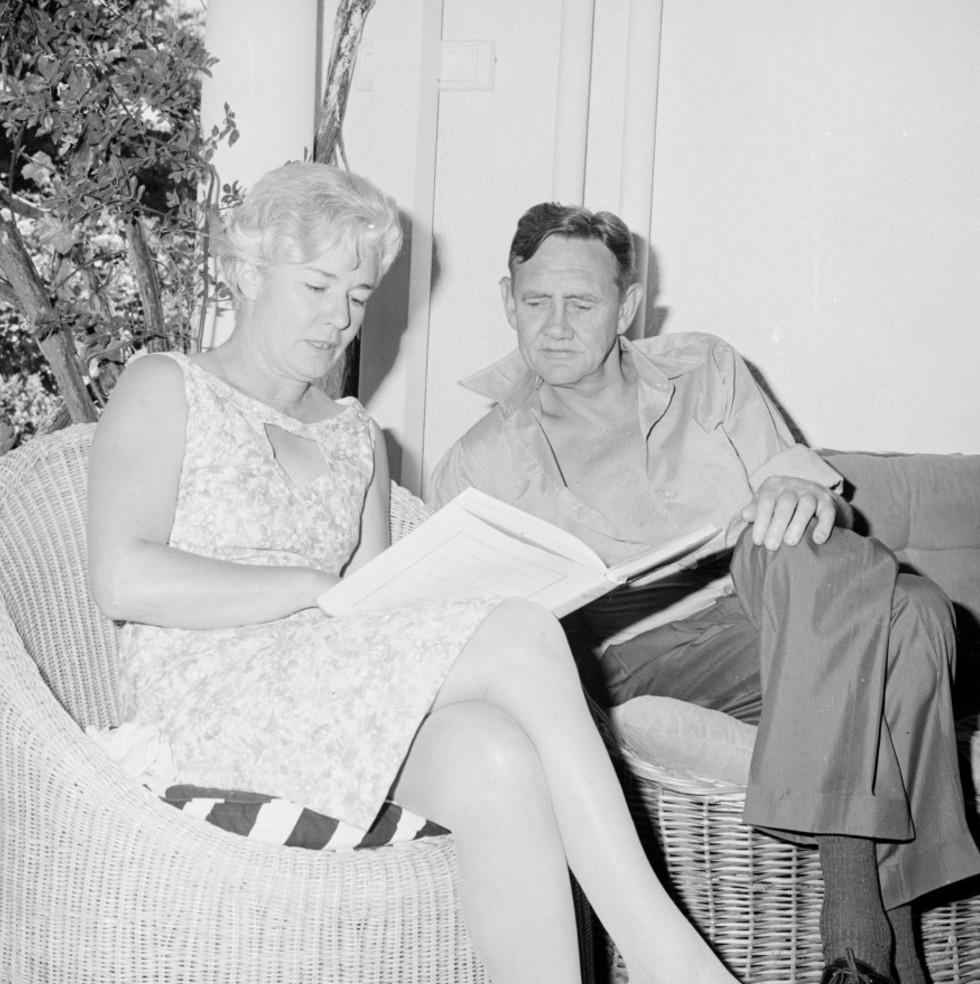
John and Bettina Gorton relax on cane chairs and read books together at The Lodge. NAA: A1200, L68921
Mrs Gorton's practical abilities in farm repairs were soon called on to deal with maintenance issues resulting from some of Zara Holt's more impractical decorating achievements at The Lodge. Repairs to a leaking ceiling that threatened the silk wallpaper in the 'Swan suite', and toning down some of the more vibrant colours in furnishings and finishes, were among the work she arranged to have done. But Mrs Gorton's lasting imprint on The Lodge was in the grounds. During the Gortons' term, a wall was built surrounding The Lodge, both as a security measure and to give some privacy from the encroaching traffic of Adelaide Avenue on the eastern side of the residence. Once the wall was completed, Mrs Gorton developed a garden of Australian native plants.
Mrs Gorton's public contribution was also significant. In 1968, the Gortons made an official visit to Malaysia and Indonesia. In Malaysia, her work on the dictionary project was already well known and, as a result, her official speeches during the visit were widely reported. In Indonesia, her speeches and ready conversations with people in their own language had an impact few prime ministerial wives have managed. But for the next 3 years the official demands on Mrs Gorton’s time meant she had to put her own interests aside, so she largely withdrew from the ANU dictionary project. In 1971, however, 'it was due to her good offices' that the project received a special grant from the Department of Education.
With Gorton out of office that year, and Sonia McMahon taking over the duties of prime ministerial wife, Mrs Gorton resumed her work on the dictionary. She later described it as the 'most interesting and difficult thing I've had to do in my life'. The project became a victim of cutbacks by Malcolm Fraser’s government in 1977, some 5 years before completion.
For 20 years from her first visit in 1960, Mrs Gorton travelled extensively in Indonesia, Malaysia, the Philippines, Singapore, Taiwan and Japan. In 1997, speaking on Gorton’s prime ministership, Gough Whitlam said Mrs Gorton had used her Indonesian language skills to make a lasting and valuable contribution to 'Australia's relations with our great neighbour'.
Mrs Gorton died, aged 68, on 2 October 1983. The garden she created at The Lodge is now named in her memory.
Sources
- Hancock, Ian, John Gorton: He Did It His Way, Hodder, Sydney, 2002.
- ANU Reporter, 14 October 1983
- Australian, 11 May 1977
- Sydney Morning Herald, 4 October 1983
From the National Archives of Australia collection
- Duties of Smith, K – liaison officer to the Prime Minister and Mrs Gorton: Prime Minister's Department c1968, NAA: A1209, 1968/8166

